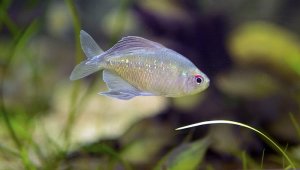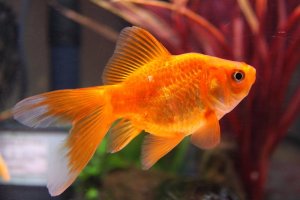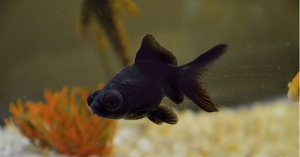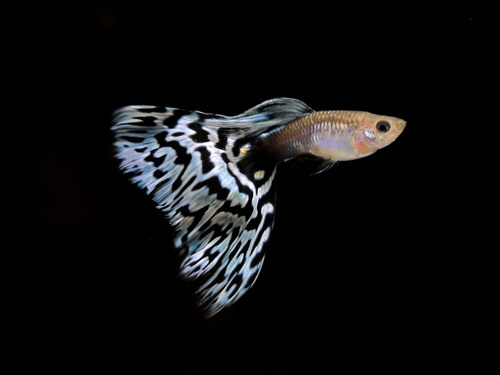
Guppy fish are one of the world’s most popular species of tropical fish. This is simply due to how easy it is to care for them. With nicknames ‘like rainbow fish’ and ‘millions fish,’ guppies are a marvel to see in a well-lit aquarium. As members of the Poeciliidae family, they are also one of the few types of fish that give birth to live fry.
Keeping a guppy is something that novice fish owners won’t need to be anxious about. These fish are generally happy in most living conditions. Their diet is also varied, so you’ll find them eating most types of fish food. On that note, it’s essential to have a balanced diet for guppies. Although they tend to eat regularly, some situations affect their feeding habits negatively.
To avoid dealing with your guppy fish not eating, it’s crucial to observe the scenarios highlighted in this article. So here we provide a deep dive into why your guppy fish is not eating and what you can do about it!
Reasons Why Your Guppy Fish Is Not Eating
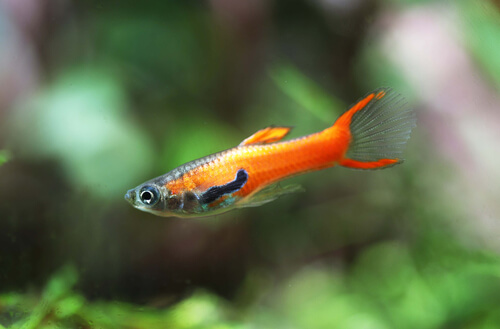
1. Expired Food
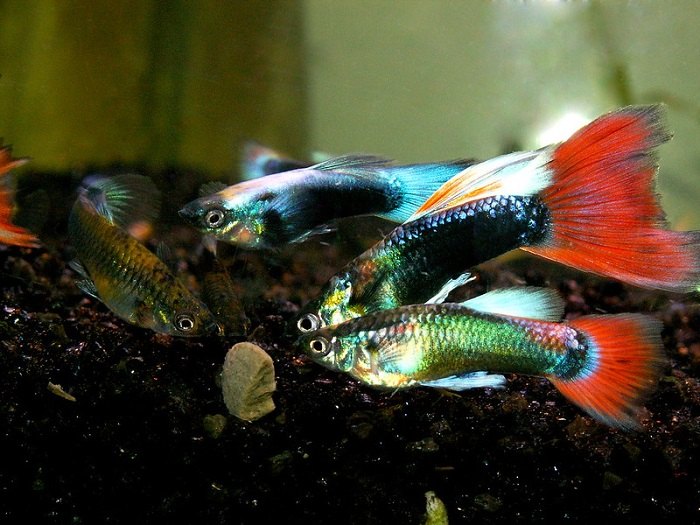
When you own guppies, the safety of store-bought food should be prioritized consistently. You can easily forget to check the expiry date leaving your guppies susceptible to the effects of expired food. Your fish can easily tell when the food is no longer nutritious, but they may still eat it if no other options exist. Other times the expired food can be the reason for your guppy fish not eating.
How To Avoid Feeding Your Guppy Fish Expired Food
These usually cheerful swimmers are likely to be uninterested when they detect that the food is expired. The biggest tell is when they stop diving into a feeding session and instead just nibble at the food. If you see them showing signs of skepticism towards the food, it’s time to see if the problem is expired food or something else.
The thing with dried fish food is that it can often be overlooked as a semi-perishable product. This means that it can expire, leading to a loss of valuable nutrients. Sometimes, the food may not necessarily be expired, but poor storage methods in your home can cause a loss of nutrients. So keep this in mind the next time you purchase pet store fish food.
To inspect whether or not you’re dealing with a problem other than expired food, you can check out any of the other reasons behind poor appetites in guppies covered in this article.
2. Stress
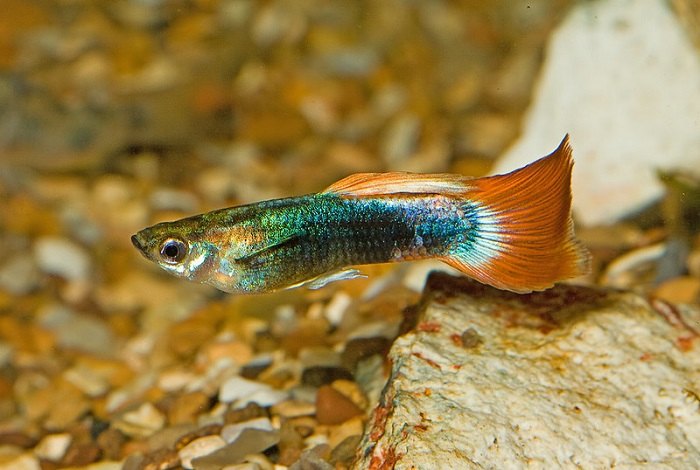
Even among passive fish, there can be an element of hierarchy and intimidation. As their primary caregiver, you should never neglect the stress levels of your guppies. Fish stress correlates directly with their health, and a scared guppy will be afraid of competing for food against bigger tankmates. Stress is definitely one of the most significant causes of guppy fish illness.
Guppies are much more docile than other fish, so you should keep that in mind when selecting their tankmates. Observing their behavior is the easiest way to know if you’ve got a bullying problem in your tank. If you can see it frequently searching for hiding spots, avoiding other fish, and sticking to the bottom, it’s time to address the problem.
A stressed fish will be too worried to eat, developing a weaker immune system and becoming more vulnerable to the causes of guppy fish illness.
How To Take Care of Stressed Guppy Fish
Sometimes, guppies can develop stress-related problems due to fluctuations in their tank’s water parameters. As primarily tropical fish, they prefer nutrient-rich conditions. However, drastic water quality fluctuations can adversely affect their well-being. Therefore, always check the temperature, oxygenation, pH, and other conditions to be safe.
If you’ve got a bullying problem on your hands, it might be time to find new tankmates for your guppies. They tend to do well with molly fish, platy fish, swordtail fish, and other species that are similar in size and nutrient requirements.
3. Guppy Fish In Labor
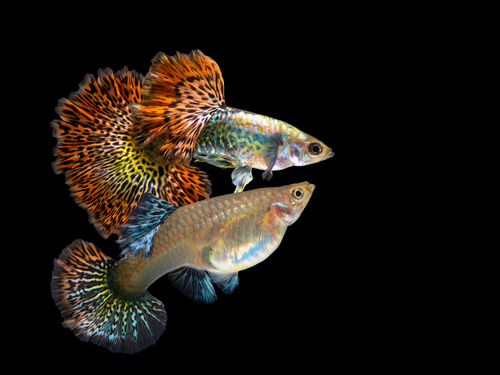
When a female guppy fish enters labor, it tends to eat less, swim in place, and generally avoid interaction with other fish in the tank, prioritizing finding spots to hide within the vegetation.
What To Do When Your Guppy Fish Is Pregnant
As this is typical of a guppy female, you should be able to identify signs of labor and take the proper steps to move it to a different tank. The tank transfer time will depend on how long the labor lasts. Typically, this should be for a few hours.
Be sure you’re able to react quickly once you notice that it’s in labor, as a female guppy must have a safe delivery space. She prefers places where she doesn’t have to worry about other fish coming to attack her new fry.
As live-bearing fish, the signs of pregnancy are easy to spot. You can check for swelling on the abdomen near the bottom of its fin and dark patches on its body. Always ensure that food is provided for the mother after its birth.
4. High Ammonia Levels
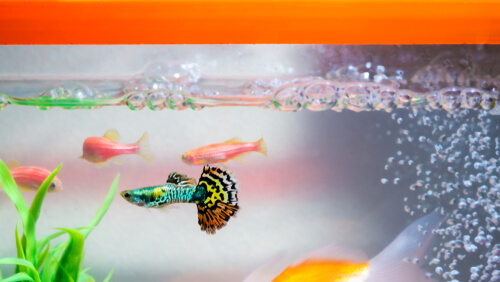
When a tank is not regularly maintained, the ammonia can sometimes elevate to life-threatening levels that can be harmful to your pet. Guppy fish not eating is a popular sign of high ammonia levels in the water, so this is the first thing you should look out for.
Some other symptoms of the condition include patches of blood around your guppy’s body, gills developing a purple or reddish hue, inactivity at the bottom of your tank, and a lack of energy.
How To Control High Ammonia Levels In A Guppy Fish Tank
Once familiar with the symptoms, closely inspect your tank and determine the cause of this ammonia.
If you’re using chemicals to kill bacteria in your tank, you may not realize that it could be doing more harm than good. Some chemicals may be killing the good bacteria along with the bad. It’s essential to have good bacteria in a fish tank as they keep water safe by breaking down the ammonia into a harmless substance.
If your tank lacks the presence of beneficial bacteria, the ammonia levels will skyrocket due to this. So be sure to introduce gravel or substrate to your tank. You can even drop a used filter pad into your new filter box as a way to begin developing a colony of good bacteria within the fish tank.
Bacteria help control ammonia levels by turning it into nitrite. When nitrite begins to grow to a more harmful state, the good bacteria are able to convert that nitrite to nitrate, thus keeping the aquarium nitrogen balance. Once your water parameters are in order, you will likely see your fish slowly begin to eat again.
5. Poor Tank Water
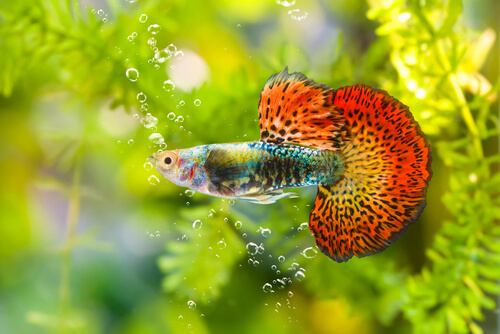
When your guppies are in a tank with poor water conditions, they will display signs of poor eating habits and other symptoms. Caring for guppies means changing their water regularly to ensure that harmful bacteria has not accumulated.
Regular cleaning helps to control the toxins and poor oxygenation in the tank. But unfortunately, if the problem begins to spread, it can transform the aquarium into a harmful environment, one of the valid causes of guppy fish death.
How To Maintain High-Quality Tank Water For Guppy Fish
While caring for guppies, it’s essential to watch out for sudden changes in their behavior, such as a loss of appetite, lethargy, and signs of illness. In addition, you may see physical changes to your fish, for example, discoloring, cloudy or swollen eyes, and visible bodily injuries.
To handle these challenges in your tank, you will need to move your guppies out of the tank and transfer them to a quarantine tank. This way, you can focus on purifying the main tank. You can do this by changing at least 50% of the water. A good filtering system is a surefire way to be consistent with the parameters of your tank. Continuously monitor oxygenation levels, pH levels, and other variables.
6. Sick Guppy Fish
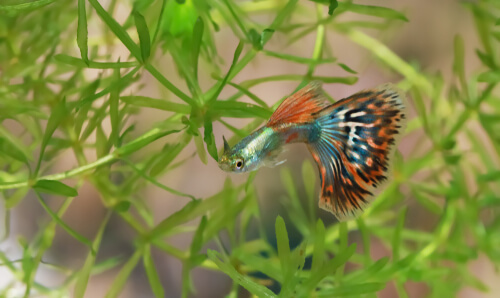
Guppy fish are not free from sickness. They are susceptible to various illnesses. When your pet is unwell, it will stop eating due to its condition. Don’t panic, though! Most infections can be treated before they become life-threatening. These are some of the most common illnesses found in guppies.
Common Guppy Sicknesses
Dropsy: This is an extremely common disease that many underlying diseases can cause, and bacterial infection can be one of them. Bacteria can be introduced to your tank by frozen foods like bloodworms or even new tankmates carrying them.
Sometimes, certain plants in your tank can carry bacteria, so you’ll need to watch out for every new element added to your tank and only source from reliable locations. Often bacteria may affect a guppy fish’s liver and kidney. When dropsy is present in your guppy, it will have a bent spine and bloated belly, causing it to struggle when swimming.
Guppy Disease: This is actually a parasitic infection that affects your guppy’s bloodstream. The parasite sticks to the fish’s skin before slowly moving through its muscles and into the bloodstream. It is usually harmless to other species of fish, but guppies, unfortunately, develop this disease quite easily.
White Spots (Ich): It is easy to detect and common in many fish species. It usually presents itself as white spots in the fins and skin. You should always watch out for this disease, as detecting it in time is crucial for your pet’s survival.
Velvet Disease: This contagious disorder is one that develops in the form of gold spots all over the skin of your fish. It is pretty tricky to diagnose and is one of the likely causes of guppy fish death.
How To Treat Sickness in A Guppy Fish
The best course of action is to seek the help of an experienced veterinarian to take a look at your guppy. This way, they can provide an accurate diagnosis. If you are not within an accessible distance of a vet, you should quarantine your guppy, change the water and keep a close eye on it.
Once your diagnosis is given, be sure to follow through with the treatments diligently.
7. Poor Male To Female Ratio
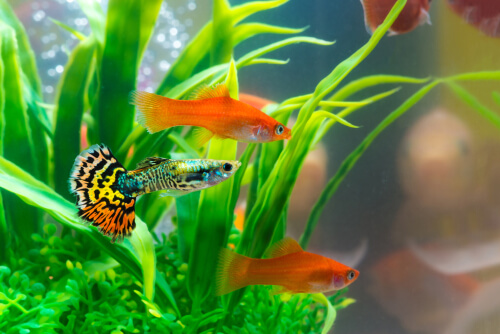
When the gender ratio of your guppies is not adequate, things can get a bit messy, and some of your fish may begin to isolate and lack an appetite. This is particularly bad for female guppies as the males tend to be aggressive during mating season, bullying the females and forcing them to avoid the males.
How To Pick The Right Guppy Gender Ratio
Having more than one male guppy in your tank can become overwhelming if there’s only one female. Therefore, you should stick to a ratio of 1 male guppy for every 2 or 3 females. This way, there’s less aggression, and the living conditions won’t be overwhelming for your female guppies.
What Is The Best Habitat For Guppy Fish?
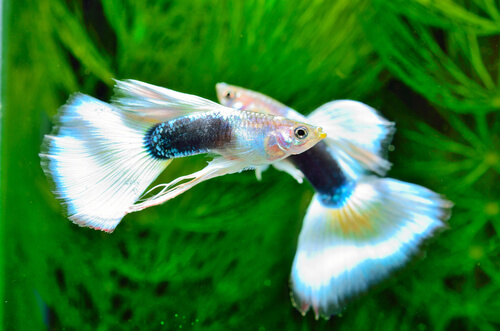
Initially discovered in the 1860s, guppies were found in South America, and they were used for pest control, especially against mosquitoes.
After being introduced to the pet trade, they’ve been bred to develop a wide variety of colors, fins, and patterns. As a guppy owner, you’re bound to find it almost anywhere across a range of price points. Typically, they tend to thrive in at least a 5-gallon aquarium. If you wish to breed them, use gentle filtration options like a sponge filter to keep the fry safe.
Guppies enjoy pH levels of 7.0 and higher. Water with high calcium levels and other minerals is also great for them. For the ideal temperature, you should be targeting between 72-82 degrees Fahrenheit.
Conclusion
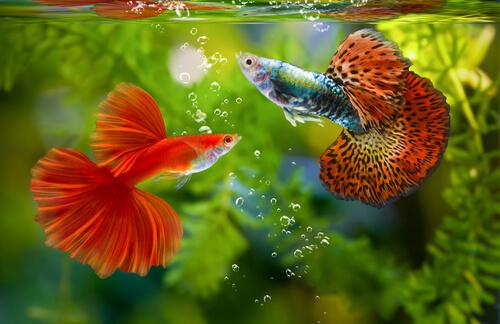
Owning guppy fish is not just an experience where you get to see nice colors. They deserve some valuable attention to keep them healthy. So be sure to look out for any of the symptoms we’ve discussed, and have fun caring for your guppy!


